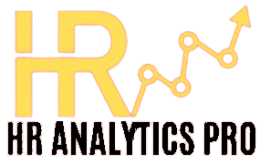20 Must-Have HR Policies for Your Employee Handbook (2024)
January 21, 2024 2024-03-01 13:1620 Must-Have HR Policies for Your Employee Handbook (2024)
20 Must-Have HR Policies for Your Employee Handbook (2024)
Our guide covers the top 20 policies for your employee handbook and trending HR strategies for today’s dynamic business world.
In the ever-evolving business landscape of 2024, Human Resources (HR) policies remain a cornerstone for successful organizations. These policies not only set expectations and ensure consistency in treatment but also play a crucial role in legal compliance and problem prevention.
Understanding HR Policies: HR policies are systematic guidelines covering a range of workplace aspects including hiring, compensation, leave, training, promotion, work environments, and termination. Developed collaboratively by HR managers and company leadership, these policies establish how an organization treats its people and property.
The Function of HR Policies: The core function of HR policies is to provide a consistent decision-making framework, ensuring equitable treatment of employees. They help in meeting ethical standards, promoting diversity, and fulfilling training needs. Additionally, HR policies are instrumental in adhering to corporate governance and employee regulation.
Key Elements of HR Policies: Effective HR policies should be rooted in best practices and regulatory compliance. Transparency, universality, clarity on procedures, and definitions of terms used are essential components. Policies should also include:
- Guidelines for supervisors and managers
- Organizational goals and values
- Regular review systems for policy updates
- Clear implementation steps
Advantages of HR Policies: Well-crafted HR policies reduce liability, ensure fair interpretation of guidelines, and provide uniform treatment across the organization. They help in prompt and consistent problem resolution and are often a legal requirement for certain information dissemination.
HR Policies & Compliance: Adherence to local, state, and federal regulations is non-negotiable. HR policies should align with laws like the FMLA, EEO-1 reporting, and the ACA, and also cater to city and county compliance requirements.
Top 20 HR Policies for Employee Handbooks:
- Recruiting and Hiring: Formalize pre-hire processes, including onboarding documentation.
- At-Will Employment: Clearly state employment terms respecting local guidelines.
- Conduct Policies: Establish norms for maintaining a safe and comfortable workplace.
- Employment Classification: Define employee categories for benefit and overtime eligibility.
- Non-Discrimination and Anti-Harassment: Detail processes for addressing harassment and discrimination.
- Safety Policies: Outline safety procedures and industry-specific regulations.
- Reasonable Accommodation: Document policies for accommodating disabilities and religious beliefs.
- Disciplinary/Termination Policies: Explain disciplinary actions and termination procedures.
- Compensation Policies: Cover benefits, payroll frequency, and secondary benefits.
- Workplace Attire: Specify dress code requirements, including industry-specific attire.
- Attendance Policies: Clarify expectations for work hours, absences, and time recording.
- Referral Program Policies: Outline referral rewards and conditions.
- Expense Policies: Define reimbursable expenses and reimbursement procedures.
- Leave Policies: Detail procedures for various types of leave.
- Sexual Harassment: Communicate zero-tolerance guidelines for sexual misconduct.
- Bereavement Policies: State compassionate leave terms and procedures.
- Local and State Laws: Adapt policies to comply with regional employment laws.
- Meals and Break Periods: Clarify meal and break duration and frequency.
- Using Company Property: Set guidelines for the use and return of company assets.
- Resignation/Exit Policies: Define resignation procedures and exit interview processes.
Trending HR Policies for Modern Workplaces (Employee Handbooks):
- Social Media Policy: Outline rules for company and personal social media use.
- Remote Work Policy: Establish eligibility and monitoring for remote work.
- Weapons/Workplace Violence Policy: Address prohibited items and behaviors.
- Confidentiality Policy: Define confidential work-related items.
- Drug and Alcohol Policy: Adapt to changing laws, especially regarding marijuana.
- BYOD Policy: Set privacy and security measures for personal device use.
Adjusting to the Dynamic Business Environment: HR policies are not static. They must evolve with current events, business needs, and legal landscapes. Organizations should continually adapt their HR policies to stay effective, compliant, and supportive of their workforce’s growth and the company’s agility.
In conclusion, HR policies are vital tools for any organization aiming to create a structured, fair, and legally compliant work environment. They not only guide organizational behavior and decision-making but also significantly contribute to a positive and productive company culture.






